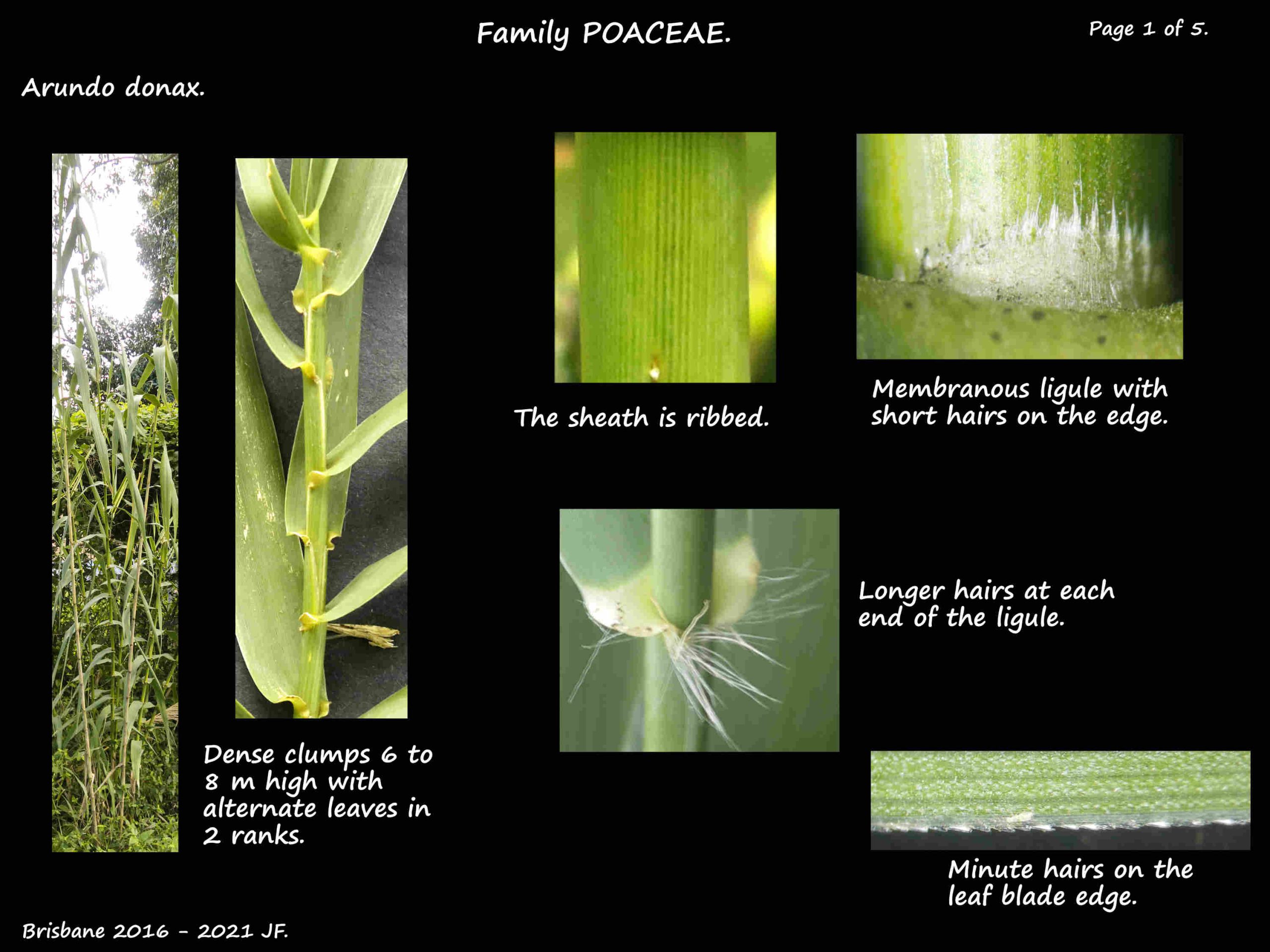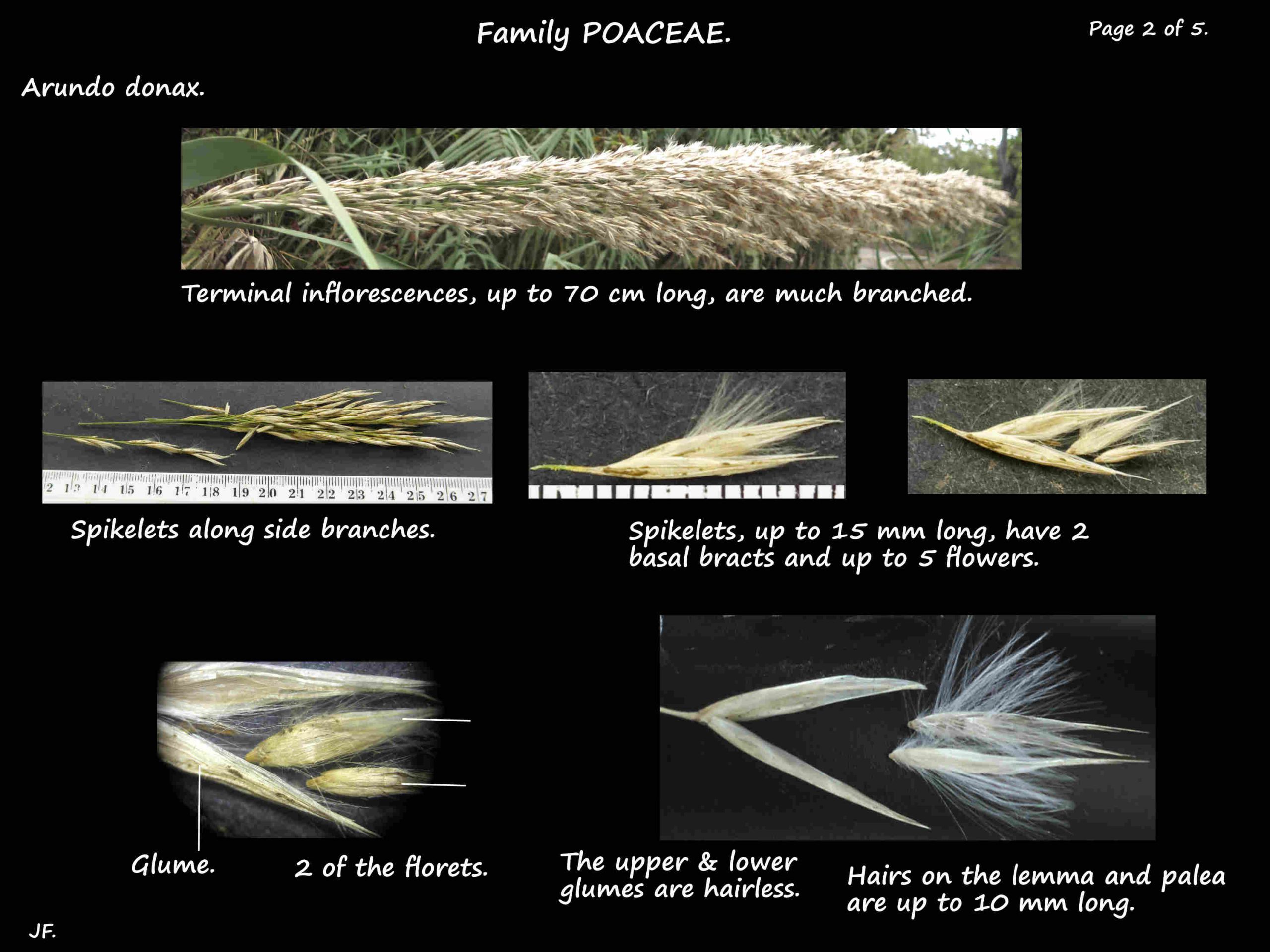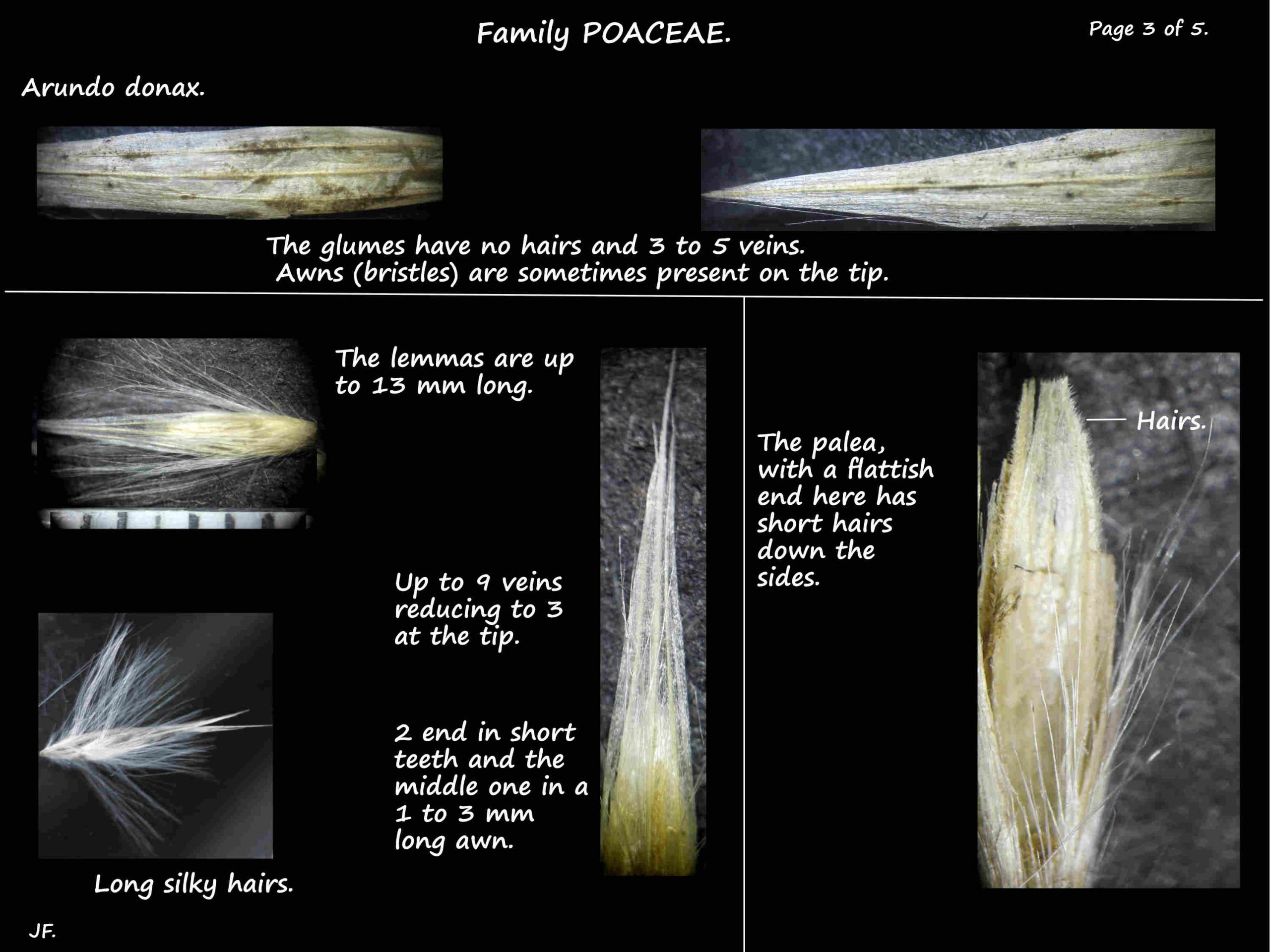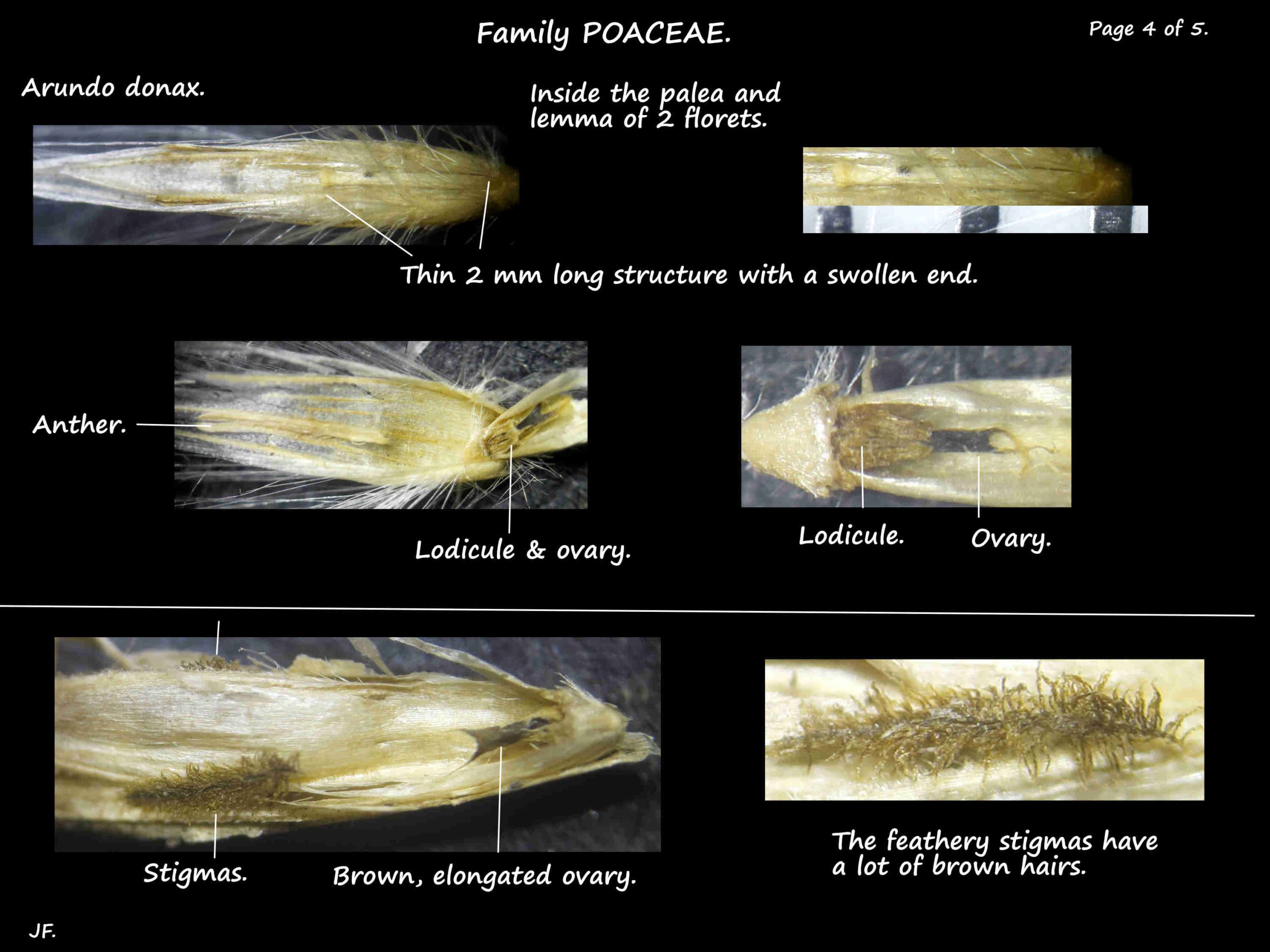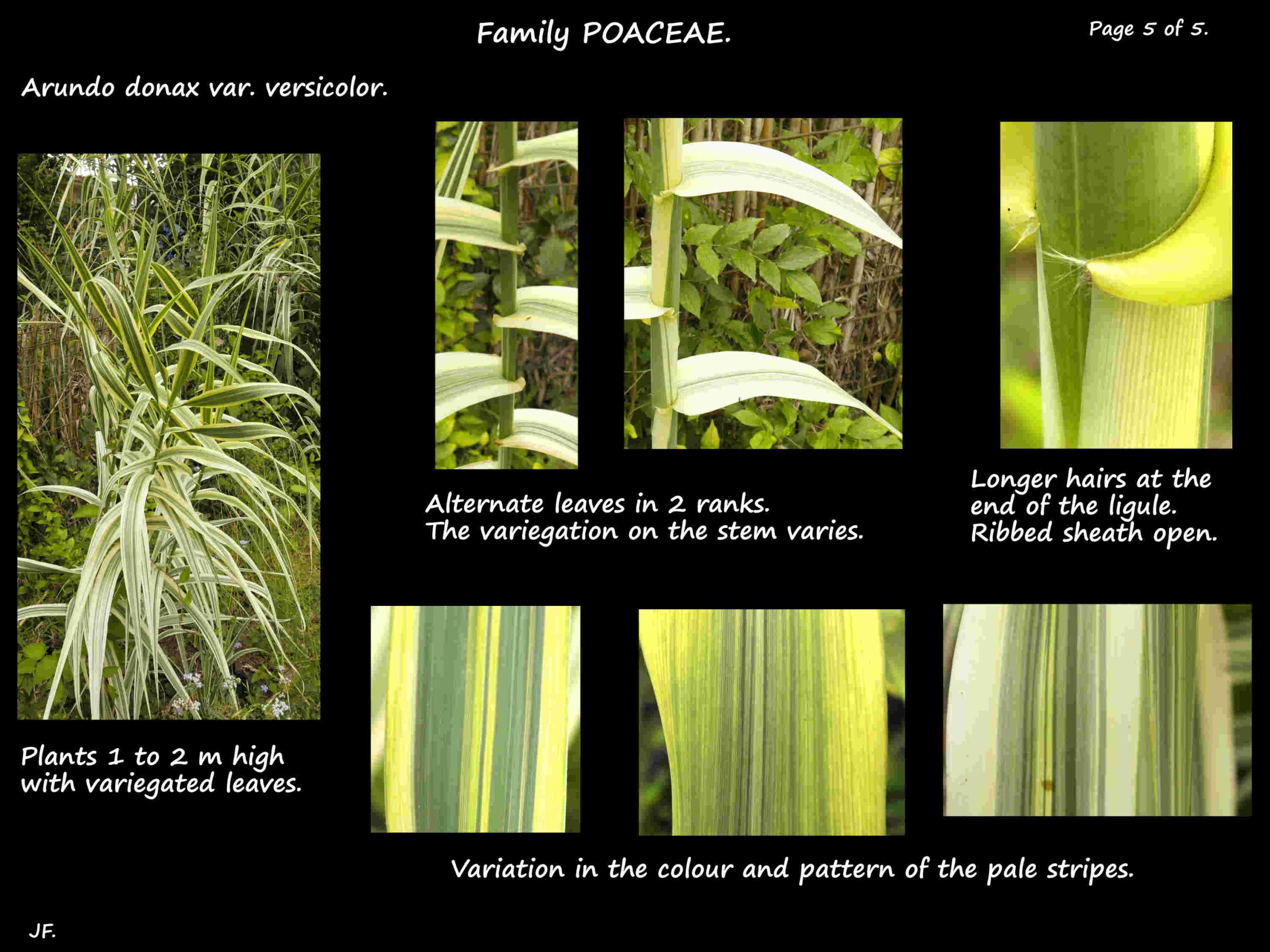Arundo donax.
Family Poaceae > subfamily Arundinoideae.
There are 3 (1 to 12) Arundo species with one naturalised in S. E. Queensland.
Arduno donax is widely cultivated as an ornamental grass despite it being an
environmental weed in Queensland.
Common names include Arundo, Giant cane, Giant reed grass and Elephant grass.
It is a cane-like grass growing in dense clumps up to 6 or 8 m high.
It has thick rhizomes from which the slightly woody stems (culms) grow.
The hairless stems may branch and are usually hollow.
The leaves are alternately arranged in 2 ranks.
The lance-shaped to linear blades are up to 60 or 70 cm long and 7 or 8 cm wide.
The edges have minute teeth, the base is heart-shaped the tip is a long tapering point.
The blade extends down the stem as an open, ribbed sheath.
The upper section has some hairs on the sides.
At the juction of the sheath and blade is the ligule which is a membrane a few mms high
with short hairs along the upper margin.
The hairs at each end are longer than those in the centre.
The erect terminal inflorescences are much branched, plume-like panicles up to 70 cm long.
The alternate primary branches are themselves branched.
The branches are flattened and rough due to tiny hairs.
Each branch has many solitary spikelets along the central midrib or rachis.
Spikelets are 10 to 15 mm long each with 2 basal bracts (glumes) and 3 to 5 flowers (florets).
Florets are bisexual except for the top one which is usually small and empty.
The narrow, lanceolate glumes are of slightly unequal length.
Up to 12 or 13 mm long they are keeled, have pointed tips and no hairs.
They have 3 to 5 veins and short awns (bristle-like tips) may or may not be present.
The thin, brownish, lanceolate, membranous lemmas are up to 12 or 13 mm long.
They have up to 7 or 9 veins or nerves at the base.
These reduce to 3 at the tip with 2 ending in short teeth and the middle one a 1 to 3 mm long awn.
The lower half of the lemmas are covered in silky hairs up to 1 cm long.
The palea, 4 to 6 mm long, has 2 nerves.
The end, flattish or slightly notched, has very short hairs.
The perianth is represented by the 2 small lodicules inside the palea and lemma.
They are 1 to 1.5 mm long and 0.6 mm wide.
The tip may have 3 teeth with the central one longer than the laterals.
There may be fine hairs.
There are 3 stamens on very thin filaments up to 5 mm long.
The dorsifixed anthers open via longitudinal slits.
The elongated ovary, under 10 mm long, has no hairs.
It has one locule with a single ovule.
The 2 styles hold the stigmas which protrude between the lemma and palea.
The feathery stigmas have dense, brownish hairs.
The fruit is a 2 to 4 mm long caryopsis often referred to as a seed or grain.
The style bases persist on the tip.
The caryopsis often contains no seed with new plants mainly growing from the rhizomes.
Arundo donax var. versicolor.
A commonly cultivated form with white stripes, in various patterns, on the leaves.
They are usually small plants around 1 m high but can grow to 5 m.
Some Phragmites species are similar to Arundo donax.
J.F.
